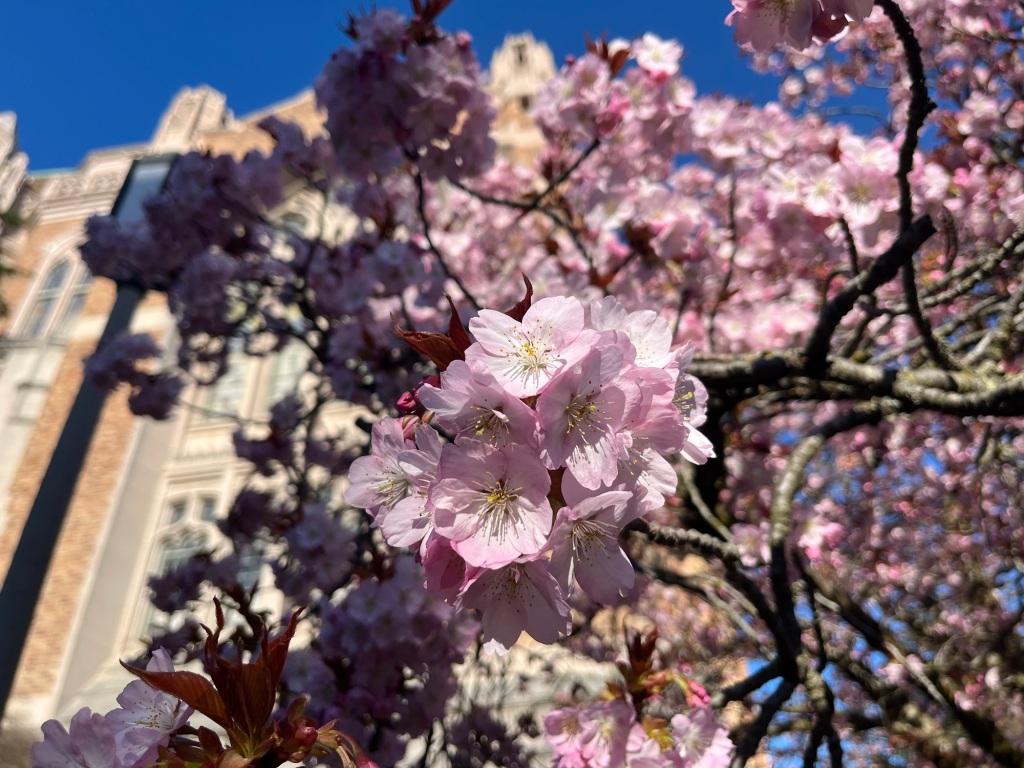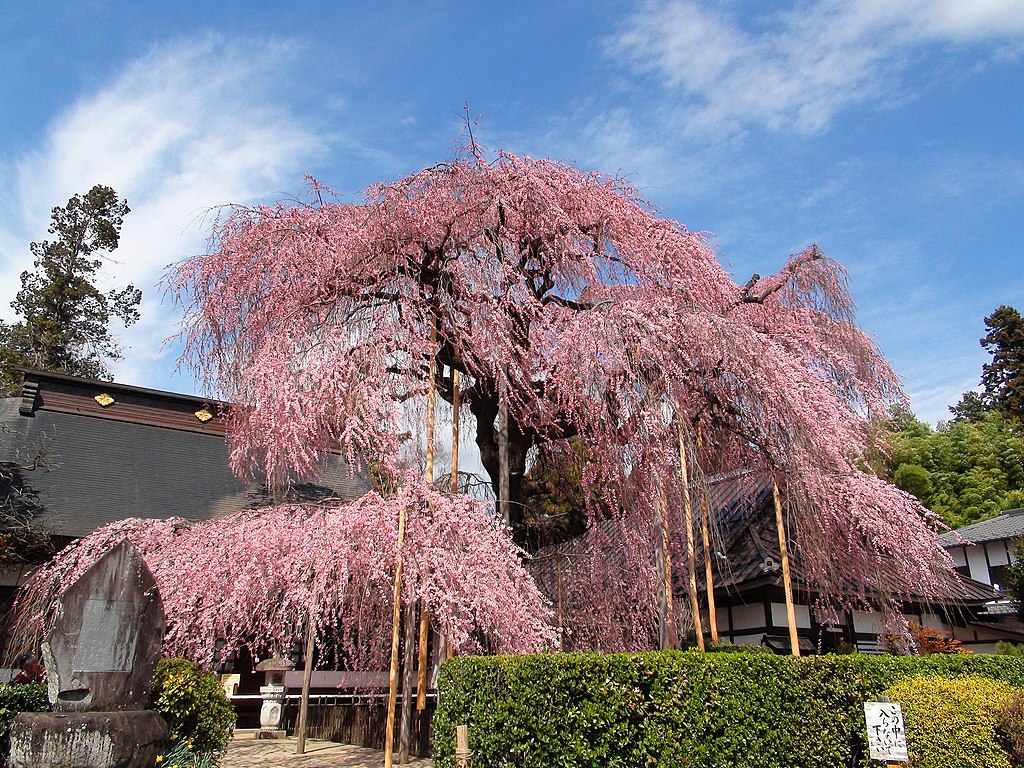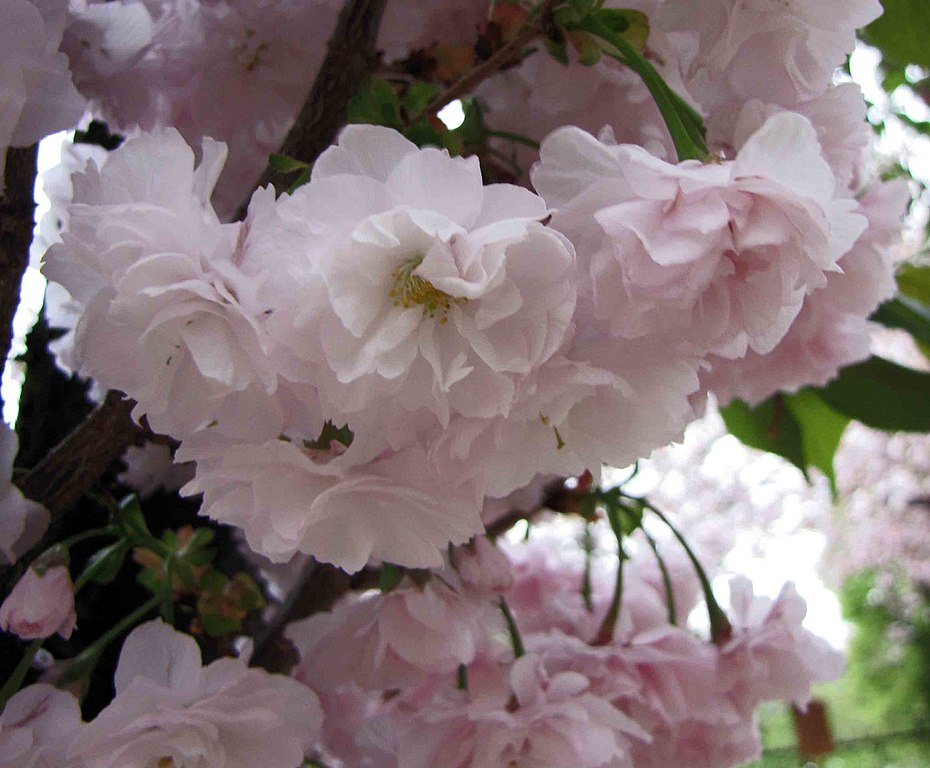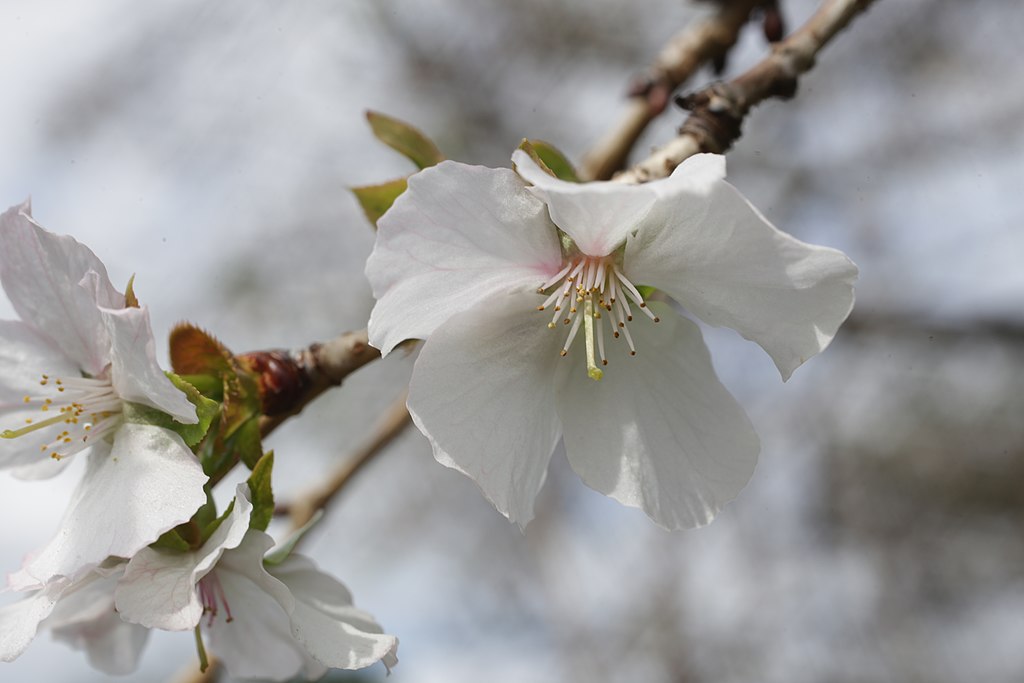As spring approaches, people eagerly anticipate when cherry blossoms (sakura in Japanese, 桜), but as I have learned recently in my book, the Hyakunin Isshu Daijiten, there are many types of sakura, some of them even referenced in the Hyakunin Isshu. Let’s explore a few and learn how to spot one versus another.
If you’re curious about how to even spot a cherry tree, my alma mater has a nice video introduction from the Pandemic era on spotting various trees in your own neighborhood:
A Brief History Lesson of Cherry Blossoms
Cherry blossoms have been a part of Japanese culture for a very long time, but were not always revered as they are now. In antiquity, the plum blossom, imported from China, were more highly revered as one can see in the Manyoshu, but over the centuries the roles reversed. The tradition of outings to view cherry blossoms is credited to Empress Jitō (poem 2). Nowadays, this tradition continues as ohanami (お花見), and can be a fun outing with friends and family or co-workers. In places like Ueno Park in Tokyo, the grounds are crowded with picnic blankets, visitors, and plenty of food and saké to go around.
The most famous, most iconic poem about cherry blossoms was composed by Ariwara no Narihara (who also wrote poem 17):
| Japanese | Romanization | Translation |
| 世の中に | Yo no naka ni | If in all the world |
| 絶えて桜の | Taete sakura no | there were of cherry blossoms |
| なかりせば | Kanariseba | no trace anywhere |
| 春の心は | Haru no kokoro wa | ah, how truly peaceful then |
| のどけからまし | Nodokekaramashi | spring would become! |
Varieties of Cherry Blossoms
Big thanks to this site for providing additional references. I also relied on some details from the Hyakunin Isshu Daijiten book I’ve used for the blog.
Yoshino Cherry
The most common, most well-known type are the Somei Yoshino (ソメイヨシノ) or “Yoshino Cherry” in English:

This is a relatively recent variety that was bred for gardening, then gained popularity abroad. It is named after the famous village of Yoshino. For many, this is the classic “cherry blossom” and the one you’re most likely to see outside of Japan.
Yae-Zakura Cherry
Another famous example is the Yae-Zakura (ヤエザクラ):

The term yae (八重) means something like “eight layers” or “eight levels”, which helps describe it’s thicker, multi-layered blossoms. It is also the subject of poem 61.
To be honest, yae-zakura are my personal favorite.
Kanzan Cherry
A popular variety that I only learned about recently is a hybrid variety called the kanzan (カンザン, sometimes archaically spelled Kwanzan). I didn’t find this one online at first, but was able to take a photo during a recent visit to the University of Washington.

This variety was, similar to the Yoshino, a relatively recent variety, and a result of hybrid breeding with Oshima cherry. What makes this one interesting is the both the rich pink color, and the multiple layers of blossoms (similar to the Kasumi cherry below).
Mountain Cherry
Another example of cherry blossoms, that’s lesser-known in the West are the wild cherry trees, or yama-zakura (ヤマザクラ) also known as the “Mountain Cherry”:

If you compare the Yama-zakura to the classic Yoshino Cherry, you can see the color is a little more faded, kind of whitish in comparison. I think I have also read somewhere that the leaves and blossoms of a mountain cherry sprout at the same time, compared to a Yoshino Cherry where the blossoms comes first.
In antiquity, when the nobility of the capitol would go on a cherry blossom viewing, these are the trees they would most likely go to see. They are the subject of poem 66 as well.
Shidaré-zakura Cherry
Another iconic variety of cherry blossoms are the shidaré-zakura (シダレザクラ), or Hanging Cherry:

You often see these grown in very scenic places, as well as on the grounds of Buddhist temples or Shinto shrines. The way the hanging branches sway in the wind is a sight to behold.
Kasumi-Zakura
One interesting variety that I was unaware of, until researching for this blog was the kasumi-zakura (カスミザクラ):

The word kasumi is a poetic term for haze or mist, especially a spring mist. You can see how the blossoms hang down somewhat, and are particularly large compared to other cherry blossoms varieties. They also seem to have a two-tone quality, where the edges are deeper color than the middle.
Fuyu-Zakura
One last example I wanted to share is an unusual variety that blooms in spring, and in winter, called the fuyu-zakura (フユザクラ):

This cherry variety, also known as a gobazakura (コバザクラ) has white blossoms and blooms both in April, and also in December.
Conclusion
There are many more varieties of cherry blossoms than listed here, but many are obscure or only known to botanists and experts. Also, it’s important to point out that Korea also has a venerable cherry blossom tradition, though I confess I don’t have much information.
In any case, when spring comes, see if you can identify the different cherry blossoms you see. You may be pleasant surprised.

Leave a comment